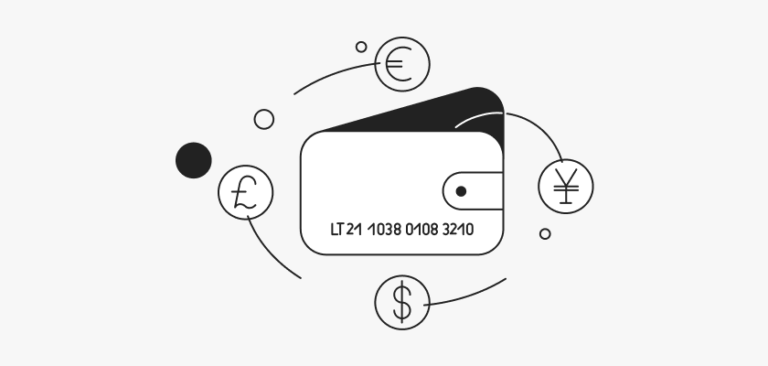Despite ever-increasing security measures designed to combat it, payment fraud is expected to continue to grow. As a result, it’s essential that merchants know what to look out for and how to implement safety measures to protect their business and customers’ sensitive information.
In this article, we look at the different types of payment fraud and how businesses can prevent them. We also discuss why fraud protection mechanisms are essential for all online businesses today.
What is payment fraud?
Payment fraud refers to any unauthorized or illegal activity conducted during a financial transaction with the aim of acquiring money or goods. Payment fraud can happen in various ways, such as using stolen payment information, committing chargeback fraud, or identity theft.
Nearly 80% of payment fraud happens in digital transactions, classified as card-not-present payments. This is because it’s more difficult for online merchants to verify that it’s the actual cardholder making a purchase.
Online payment fraud is typically:
- Organized by criminal networks using sophisticated tools and technologies
- Targeting vulnerabilities in online payment systems, such as weak security measures
- Aimed at both businesses and customers.
Payment fraud poses a significant risk to both individuals and merchants. For businesses, it can lead to loss of finances, disrupted operations, and a damaged reputation. When businesses fall prey to payment fraud, customers lose trust and may share their negative experiences online, affecting business credibility and image. At the same time, payment fraud can impact customers financially and emotionally, leading them to lose confidence in the security of their transactions.
For that reason, taking preventative measures is essential for businesses to combat payment fraud and maintain secure financial transactions. This can be done using authentication methods, transaction monitoring, encryption technologies, and employee training.
Types of payment fraud
There are various types of payment fraud that use a range of tactics and methods to deceive individuals, businesses, and financial institutions. Below are some examples of the most common types of payment fraud.
Phishing
Phishing is when an individual sends fraudulent communications to trick victims into providing their sensitive information, such as passwords, credit card details, or personal data. Phishing attacks are usually carried out through emails that look like they’re coming from a trusted source, such as a bank or a retailer.
The email may ask recipients to click on a link to update their account information, claim a prize, or verify a recent transaction. When clicked, the links take victims to a false website that prompts them to enter their credit card details, login credentials, or other sensitive data. This information is then captured by fraudsters and used to carry out unauthorized transactions.
There are different types of phishing depending on the platform it’s carried out on:
- Smishing: Phishing attacks on text messages.
- Vishing: Phishing attacks through voicemail.
- Pharming: Phishing that happens on social media.
- Spear phishing: A more personalized form of phishing that targets specific individuals.
How to prevent phishing
While phishing can’t necessarily be prevented, measures can be taken to mitigate its risk:
- Always be cautious before opening any links or attachments from unknown or suspicious sources
- Look out for unusual grammar or spelling mistakes in emails
- Use antivirus software
- Train employees to spot phishing attempts
- Stay up-to-date on the latest phishing attacks and how to recognize them.
Chargeback fraud
Chargeback fraud, also known as friendly fraud, happens when a legitimate customer disputes a transaction by claiming they didn’t receive the goods or services they purchased. This results in a chargeback, allowing customers to receive a refund and keep the product or service.
The most common type of chargeback fraud is when a customer makes a legitimate purchase and later disputes it with their credit card company. They might claim the item never arrived or it wasn’t as described. In some cases, customers might claim that they don’t recall making a purchase and that their credit card has been compromised. This type of fraud results in financial loss for businesses, including lost revenue from a disputed sale and chargeback fees and penalties.
Of course, not all chargebacks are examples of payment fraud. Many times a customer has legitimate reasons to dispute transactions. It is, however, a common form of payment fraud that causes direct financial loss to merchants.
How to prevent chargeback fraud
There are a couple of measures businesses can take to mitigate the risk of chargeback fraud:
- Ask customers to sign a proof of delivery upon receiving a product. This can be used to dispute claims of an undelivered item or a customer not remembering a purchase.
- Ensure product and service descriptions are accurate to better manage expectations and ensure customers know what they are receiving.
- Have clear refund and return policies in place that can be used in case of disputes.
Card-not-present fraud
Card-not-present fraud involves unauthorized transactions in situations where a physical card isn’t required, usually online or phone transactions. Because these transactions don’t require physically presenting a card to merchants, it’s more difficult to verify a cardholder’s identity. Fraudsters take advantage of this by using stolen credit card information to make purchases without the cardholder’s knowledge.
Instances of card-not-present fraud have increased with the popularity of online transactions. This type of payment fraud can lead to financial loss for merchants, who may be liable for chargebacks or fraudulent purchases.
How to prevent card-not-present fraud
There are a few steps merchants can take to prevent card-not-present fraud, including:
- Use multi-factor authentication (MFA) to add extra layers of security. SMS codes or one-time passwords (OTPs) can help ensure the person making a purchase is the cardholder.
- Use Address Verification Services (AVS) to compare the billing address provided during checkout with the one on file with the card issuer.
- Use fraud detection tools to identify suspicious activities, detect known fraud patterns, and flag potentially fraudulent transactions.
Business email compromise
In business email compromise, emails are sent to employee accounts to trick them into making unauthorized wire transfers or revealing sensitive information. Fraudsters will often impersonate high-level executives or vendors and request the employee to make an urgent payment. The email may look legitimate, with the company’s branding and a similar email address, but the employee will be paying the money into the fraudster’s account.
Some signs of business email compromise include:
- Urgent requests for payment
- Odd or unfamiliar payment instructions
- Emails with spelling or grammar errors.
How to prevent business email compromise
Below are some ways businesses can prevent business email compromise:
- Implement email authentication protocols like SPF (Sender Policy Framework), DKIM (DomainKeys Identified Mail), and DMARC (Domain-Based Message Authentication, Reporting, and Conformance).
- Conduct regular training sessions so employees know how to recognize BEC attempts.
- Establish strict authentication procedures for fund transfers or sensitive data sharing, for example, requiring multiple levels of approval.
Clean fraud
Clean fraud is a sophisticated form of payment fraud that can be difficult for security systems to detect. In clean fraud, fraudsters use real data, such as stolen identities or financial information, to impersonate the original cardholder and create accounts or conduct transactions.
Unlike friendly fraud, where hackers hide behind fake identities or stolen data, those who conduct clean fraud often possess significant knowledge about the cardholder and their credit card details. This allows them to use real customer information to trick systems into believing they are the genuine cardholder, allowing them to make purchases that appear legitimate and while avoiding detection.
How to prevent clean fraud
Businesses can employ some methods to reduce instances of clean fraud, such as:
- Use multi-factor authentication (MFA) to provide an extra layer of security
- Leverage data analytics and pattern recognition technologies to detect anomalies in user behavior or transaction patterns
- Review and scrutinize high-risk transactions that exhibit unusual patterns.
Triangulation
This type of payment fraud happens when a fraudster creates a fake online store selling products at unrealistically low prices. This is how it typically happens:
- The fraudster sets up a fake online store.
- A legitimate customer purchases a product from their store.
- The fraudster uses stolen credit card information to buy this same product from a genuine retailer and sends the product to the customer’s shipping address.
- The customer receives their product, unaware that they have participated in fraud.
- The fraudster pockets the difference between the item they sold and purchased using the stolen card.
- The retailer has unknowingly processed a fraudulent transaction.
Merchant identity fraud
Merchant identity fraud involves the use of stolen or false identities to set up merchant accounts. Fraudsters will act as a legitimate business but use their account to process fraudulent transactions and evade detection.
There are three forms of merchant identity fraud:
- Bust out fraud: Involves setting up a merchant account with the sole purpose of processing fraudulent transactions.
- Identity swap: Involves using fake or stolen identities to set up merchant accounts.
- Transaction laundering: Involves an unknown company using an approved merchant’s credentials to process payments without the knowledge of the acquirer.
How to prevent payment fraud
While it may be difficult to completely prevent payment fraud, there are several proactive measures that can be implemented by merchants to reduce the risks associated with fraudulent activities.
Below are some examples of how merchants can prevent payment fraud.
Use robust authentication measures
Authentication measures are crucial in preventing unauthorized access and fraudulent transactions. Implement multi-factor authentication whenever possible to add layers of security to your payment process. You can do this by asking users to authenticate their identity with at least two independent factors, for example, a password + a one-time verification code sent to a registered device. It’s also a good idea to require strong passwords from customers and request them to log into their accounts before making a purchase.
Adding robust authentication measures will add extra security to your transactions and make it more difficult for unauthorized access or transactions to occur. Be sure to regularly update and strengthen your authentication methods as cyber threats continue to change and evolve.
Monitor transactions
Keep a close eye on your accounts and transaction data for any suspicious activity or unauthorized transactions. Implement real-time fraud detection tools that analyze transaction patterns and behaviors to detect anomalies, for example, multiple failed payment attempts or rapid-fire transactions from the same IP address.
Being proactive with transaction monitoring allows you to quickly investigate and respond to potential fraud, enhancing the security of your online store.
Partner with verified payment gateway providers
When choosing payment gateway providers for your online store, choose one with strong security measures, such as encryption, tokenization, and support for secure payment protocols. Ensure that your payment processors and providers comply with industry-standard security protocols, like PCI DSS (Payment Card Industry Data Security Standard), to safeguard payment card data.
Partnering with a verified and secure payment processor, such as ZEN.COM, will help you protect sensitive cardholder data and mitigate the risk of unauthorized transactions.
Educate yourself and employees
Be sure to always educate yourself and your employees on the latest fraud trends. Payment fraud is constantly evolving and technologies are advancing. Staying up-to-date on the latest trends, techniques, and tactics will allow you to update your security measures to stay ahead of potential threats.
If you have employees, conduct regular training sessions to raise awareness about common fraud tactics. Train your team to recognize and report suspicious activities and to be cautious about sharing sensitive information.
Why fraud protection is important
Implementing fraud protection measures can help uphold a business’s reputation, protect their financial assets, and maintain customer loyalty. Below are some reasons that outline why fraud protection is so important, particularly for online businesses.
Prevent financial loss
Fraud protection measures can help prevent businesses from significant financial loss. Payment fraud is costly in small doses, but as companies grow, the potential for fraud increases and can pose an even bigger threat. Implementing strong fraud prevention measures allows businesses to reduce the risk of financial loss and adequately plan for future growth.
Reduce chargebacks
Fraud protection measures can help reduce chargebacks, which not only result in lost revenue and merchandise but also additional fees and penalties. By identifying and preventing fraudulent transactions, businesses can minimize the occurrence of chargebacks and conserve valuable time and resources spent on dispute resolution.
Protect customer data
When businesses invest in fraud protection, they’re not only protecting themselves but also their customers. Payment fraud affects customers just as much as it affects businesses, and often involves stealing sensitive customer data such as credit card numbers and personal information. Having a proactive approach towards fraud protection ensures that customer data is secure and confidential, helping foster customer trust and loyalty.
Maintain reputation
Taking steps to safeguard against payment fraud can help uphold a company’s reputation and foster customer trust and loyalty. Even small instances of payment fraud can damage a business’s reputation and cause them to lose customers. By demonstrating a commitment to security through fraud prevention, businesses can strengthen their brand image and retain customer confidence.
Protect your business with secure payments
As online transactions increase, so too does the threat of payment fraud. This threat poses a significant risk to merchants and is constantly evolving with new tactics, technologies, and strategies. Implementing strong fraud prevention measures is essential to protect both your business and your customers.
The first step towards payment fraud prevention is to partner with a secure payment gateway. ZEN Business is an all-in-one payment platform that enables fast, secure, and smooth flow of money between your customers and online store. Apply for ZEN Business and start trading with confidence.



